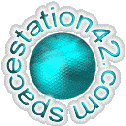How to Make your own Web Page on the Brother GeoBook
You will probably want to print this out.
Currently this is just a rough draft. But due to popular demand I am posting it as is until I can get some feed back and make the rest of the needed changes. In almost 3 years I have not received a single request for more information. I currently have no plans to update this page further.
What is the best way to make your own home page on the GeoBook?
Well it's not going to be just point and click. You will have to follow instructions and analyze the problem logically. This is not hard but it will take time and patience. First you have to learn to break things down small pieces. Second you don't have to understand every thing to do some thing. Little things you will figure out by trial and error. The best advice I can give you for anything you every have to do with any computing device no mater how big or small is "Try again.". In every device stuff WILL go wrong. You may have to go to some trouble to correct it. You may have to "Format" and start all over from scratch. But with any software you can always get back to the start point.
Now I am NOT going to teach you everything there is to know about HTML. I will show how to breakdown and read a URL. And how to put text links on your browser screen, before connecting to the web.
Before we begin we start by turning the unit on and starting at the Main Menu. Click Work Processing. Click New and let the writing begin.
First the URL: Uniform Resource Locator (It goes into the space next to "Location" near the top of the browser window.
Lets start at the beginning. http:// (pronounced H, T, T, P, Colon, Forward Slash, Forward Slash) goes at the beginning of every URL. (There are times when this is not true but you can discover that on your own.) Just accept that it goes first, and things will work right almost all the time.
[DO THE SAME FOR FILE:///] *-*-*
Next is the well known www. This is always needed if the server you are accessing is out side of the United States (and assuming that you are in the US as well). The best way to find out weather or not it is needed is to try it both ways and see what happens. The worst thing that can go wrong is, it will not work. No big deal. Make a note and get on with what you are doing.
Now we have the "Domain Name" like ss42. This is the one word name that the owner of the site chose and hopes you will remember. If you are looking for a company, their name is probably their Domain Name, like "Coca-Cola" .
Last we have the .com The best known URLs end with .com. But there is also .net, .org, .gov, .us, .to, .cc and others. (If you are trying to guess a URL, then you should try .com first.)
Now I said that that .com comes last. And for the Name of the site it is. But once you go into the site, the name gets longer. This page, for example, has the address http://www.ss42.com/brother/homepage.htm . The part that says /brother is the the folder or directory the file (web page) is in. And the /homepage.htm is the name of the file I created to show what you are reading now.
Tip: If you some one gives you a web address to go to and nothing comes up, then try dropping the last part, until you find the root of the URL. Then maybe you can find your way to your friends link. Something may have been misspelled, but if you find the root URL, then you will know that that part is correct. So yo only have have a bit left to solve.
Now the HTML "CODE" Hyper Text Markup Language
This part you do NOT need to UNDERSTAND, but you do have to LEARN to DO it, if you want a tailor made home page. The most important thing is to follow the rules.
Every link will start with <a href=
Then the full URL (Example: http://www.ss42.com/geobook.htm)
Followed by > and a space.
On the same line five the description YOU will read so that you will know
what it is linked to. (Example: The GeoBook Explained) And the last thing
for that line is </a>
The whole Example would look like this
<a href=www.ss42.com/geobook.htm> The GeoBook Explained</a>
When you load this into the browser you will see the words "The GeoBook Explained" with a line under it (That means it is a link). When you click on it, the browser will go online (use the phone) and find the GeoBook page on my site for you.
To carry this idea even farther, we need to know how to add spacing and
line breaks (carriage returns).
To put two or more links on one line, just PUT A SPACE AFTER the </a>
at the end of one link, then start the next one with <a href= just
like before.
To go down to the next line you will need a Line Break. Just put <br>
at the end of the link (after </a>) or before the <a href= at
the beginning of the line.
Example:
<a href=www.ss42.com/geobook.htm> The GeoBook Explained</a>
<a href=www.ss42.com> Sponsors of The GeoBook Explained</a>
<Br><a href="www.yahoo.com"> Yahoo Search Engine</a>
<a href=www.yahoo.com> Yahoo Search Engine</a>
Export the file as an ASCII or plain text format
Remember 8 characters or less and it ends with .htm
[EXPLAIN EXPORTING AS HTML] *-*-*
